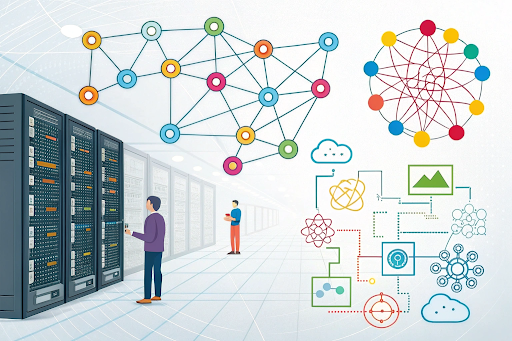Neural Networks

Neural networks and deep learning have transformed the field of artificial intelligence , enabling machines to perform complex tasks that were once thought to be exclusive to human intelligence . With the rise of deep learning algorithms , machine learning ( ML ) , and artificial intelligence ( AI ) , businesses and researchers are leveraging neural network technology to solve a wide range of problems , from image recognition tasks to natural language processing .
What Are Neural Networks ?
A neural network is a computational model inspired by the structure and function of the human brain . It consists of interconnected neurons , which process and transmit data through multiple layers . Neural networks consist of three main layers :
- Input Layer: Receives data for processing.
- Hidden Layers: Perform complex computations and extract features.
- Output Layer: Produces the final result or prediction.
Different types of neural networks include feedforward neural networks , recurrent neural networks ( RNNs ) , and convolutional neural networks ( CNNs ) . These networks are widely used for applications such as speech recognition , autonomous driving , and medical diagnostics .
Deep Learning and Its Importance
Deep learning is a subset of machine learning that utilizes deep neural networks with multiple hidden layers . This approach enables the deep-learning model to learn intricate patterns in data . Deep learning networks have significantly improved tasks such as :
- Image and Speech Recognition
- Natural Language Processing (NLP)
- Autonomous Systems
- Generative AI Applications
Deep Learning Algorithms
Several deep learning algorithms enhance the efficiency of deep learning models . Some of the most popular ones include :
- Convolutional Neural Networks (CNNs): Ideal for image and video processing.
- Recurrent Neural Networks (RNNs): Effective for sequential data such as time series and speech recognition.
- Generative Adversarial Networks (GANs): Used for creating synthetic data and enhancing images.
- Transformer Models: Powering state-of-the-art NLP applications like ChatGPT and BERT.
Training Neural Networks
The process of training a deep-learning network involves feeding training data into the system and adjusting the connections between neurons using a learning algorithm . This process is known as backpropagation and uses optimization techniques such as gradient descent .
Applications of Deep Learning
Deep learning applications have revolutionized various industries , including :
- Healthcare: Disease detection and drug discovery.
- Finance: Fraud detection and stock market predictions.
- Automotive: Self-driving cars and traffic pattern analysis.
- Education: Personalized learning through AI-driven platforms.
If you're interested in mastering these technologies , consider enrolling in a Data science course in Lucknow to gain hands-on experience .
Future of Neural Networks and Deep Learning
As AI research continues to advance , the deep-learning revolution is expected to bring more deep learning offerings to industries . Institutions like the MIT Artificial Intelligence Laboratory and the McGovern Institute for Brain Research are pushing the boundaries of artificial-intelligence research . With the increasing demand for AI professionals , taking a data science course in Lucknow can help individuals gain expertise in deep learning systems and machine-learning models . Neural networks and deep learning have become the backbone of modern AI , providing solutions for complex real-world challenges . As deep learning algorithms and deep-learning models continue to evolve , they will play a pivotal role in shaping the future of technology . Investing in learning these concepts can open up numerous career opportunities in the AI-driven world .

